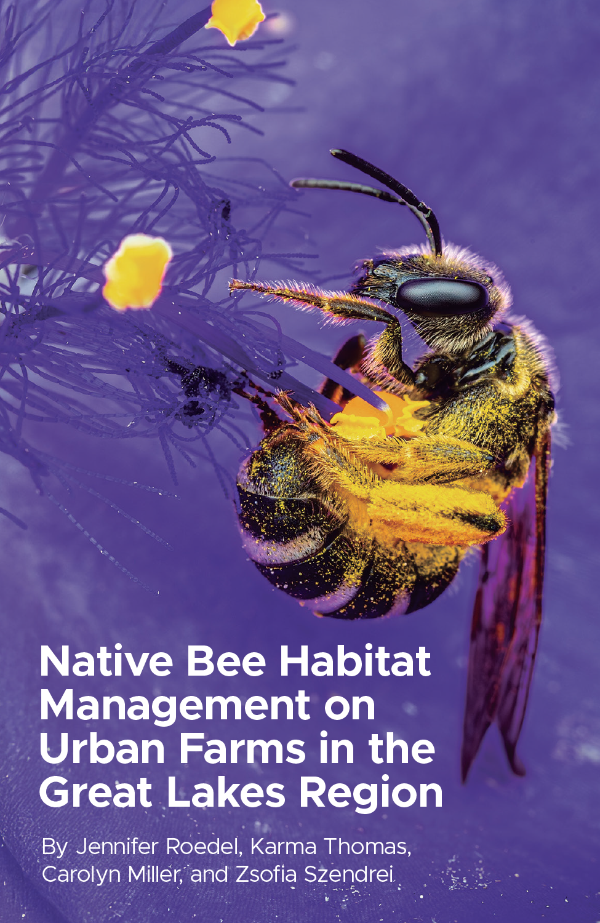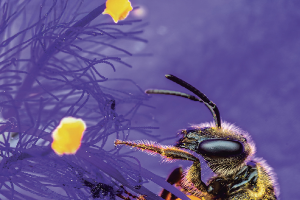
Bulletin E3527
Native Bee Habitat Management on Urban Farms in the Great Lakes Region
DOWNLOAD
September 29, 2025 - Jennifer Roedel, Karma Thomas, Carolyn Miller and Zsofia Szendrei, Michigan State University
This Document is offered in: English, Espanol
This pocket guide was designed to help urban growers manage pollinator habitat on farms in the Great Lakes Region. By doing so, farmers can increase the pollination services of native wild bees while helping to conserve them. In this guide, we focus on native wildflower plantings, which are a type of habitat made of herbaceous plants. Bees feed on the pollen and nectar from the flowers and build their nests within the plantings. About 30% of solitary bees will nest in hollow plant stems or holes in wood, like tree trunks or fallen logs. The other 70% of bees nest underground in patches of exposed soil. Native trees and shrubs are also an important type of habitat for bees to nest and feed in. Trees and shrubs usually bloom in early spring, so they are some of the first flowers bees can find. However, their larger size and longer lifespan can make them harder to manage in cities. The plants in this guide were selected because they thrive in urban environments. They also support the bees that are the most valuable pollinators to crops commonly grown on urban farms and gardens.
This work comes from the Bee Urban Growers (BUG) Project and is supported by the NC-SARE award LNC23-489 and NC-IPM award 2022-70006-38001.



 Print
Print Email
Email








